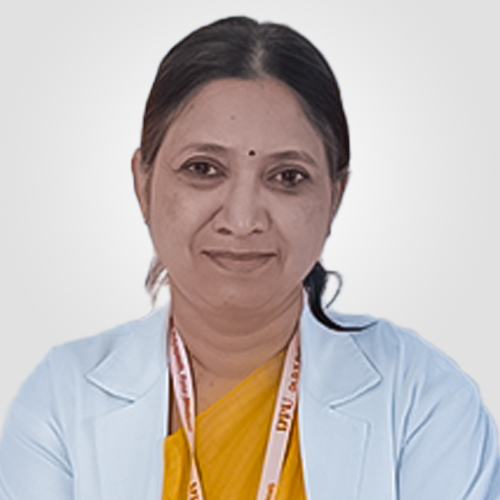Fibroids Treatment & Diagnosis in Sadashiv Peth, Pune
Fibroids refer to the abnormal formation of muscular tumors that develop in or on a woman’s uterus. They are constituted by connective tissues and smooth muscle cells. Fibroids may vary in their size and shape, while some may appear as tiny as a seedling which may often be difficult to detect, others may be quite a large presence in the form of bulky masses which may hold the ability to distort the uterus or enlarge it. Fibroids often appear during the phase of childbearing. They can form as a single unit or in multiples. In the extreme case when multiple fibroids tend to appear, it may lead to the expansion of the uterus so much that it reaches the rib cage, adding more weight to the body. Fibroids may also vary with their location. They may appear inside the uterus, on the uterine wall, or on the surface. They may even appear attached by a stalk-like structure to your uterus. In some cases, fibroids may be accompanied by severe abdominal pain and heavy period, while in others, there may be no symptoms at all. Fibroids are also known by a few other medical terms: Leiomyomas, Myomas, Uterine myomas, and Fibromas. Up to 80% of women are said to have fibroids mostly by the age of 50 years. Although, most of them may not suffer from any symptoms and may never know about having fibroids. Fibroids are found to be more common amongst African – American women as compared to white women. They are also known to shrink after menopause. Even though fibroids are rarely cancerous in nature, they form for every 1 in 1000 cases, according to the Office of Women’s Health. When a Fibroid is found to be cancerous, it is known as Leiomyosarcoma.
There can be different types of fibroids depending on their location of development in the uterus:
Subserosal fibroids: They form on the outer surface of the uterus, called serosa. they may develop so large in size that it can make the womb appear larger on one side.
Intramural fibroids: these are the most common type of fibroids and appear within the wall of the uterus.
Submucosal fibroids: they develop in the middle muscular layer of the uterus and are not very common as compared to the other types of fibroids.
Pedunculated fibroids: when subserosal fibroids develop s stem which attaches it to the uterus, it takes the form of pedunculated fibroids.
Causes
The cause of developing fibroids is relatively unknown but it is usually observed to develop when the estrogen level in the body is high and there can be a few factors influencing the development of fibroids:
Family history: fibroids may run in the family and can be inherited genetically.
Hormones: Hormones particularly estrogen and progesterone, stimulate the development of fibroids
Pregnancy: during pregnancy, the level of estrogen and progesterone in the body increases, which leads to the development of fibroids.
Extra-cellular matrix (ECM): extra-cellular matrix performs the function of holding the cells together and are more in fibroids, making them more fibrous.
Symptoms
Often fibroids are accompanied by no symptoms and the person may not realize their presence. The problems caused by the presence of fibroids may be due to their location, size and, number.
The most common symptoms accompanying fibroids are:
- A heavy and painful period that may include blood clots
- Frequent urge to urinate
- Pain in the lower back
- Pain in the pelvis
- Swelling of the abdomen
- Difficulty emptying the bladder
- Constipation
- Painful sex may also be known as dyspareunia.
- Backache
- Pain in the legs
Request an appointment at Apollo Spectra Hospitals, pune
Call 1860-500-2244 to book an appointment
Treatment
Gonadotropin-releasing hormone (GnRH) agonists, such as leuprolide, may help shrink the fibroids by decreasing the level of estrogen and progesterone. This may cause a temporary menopause stage.
- Other treatments that can be chosen from are:
- Forced Ultrasound Surgery
- Uterine Artery Embolization
- Progestin-releasing Intrauterine Device (IUD) helps control the heavy bleeding and cramps
- Radiofrequency Ablation
- Endometrial Ablation
Surgery: Known as myomectomy, the surgery can be performed to remove large and multiple fibroids.
In case no other treatment works well, a hysterectomy can be performed. Although, this holds a drawback that the women undergoing a hysterectomy may not be able to bear children in the future.
Home remedies
Home remedies may be used to reduce the effect of symptoms, these may not specifically help with shrinking or eliminating the fibroids.
Foods to avoid:
- Red meat
- Alcohol
- Sugar
- Refined carbohydrates like pasta, flour, soda, corn syrup, boxed cereals, baked goods, chips, and crackers.
Foods to add to your diet:
- Fiber-rich food items
- Raw fruits and vegetables
- Brown rice
- Dried fruits
- Beans
- Lentils
- Quinoa
- Whole grain bread
Dairy supplements may help with the reduction of fibroids.
Magnesium, vitamin E, vitamin B-1, vitamin B-6 are beneficial to treat the symptoms.
Weight and blood pressure should be maintained and stabilized.
Warm baths, warm compressors, yoga, and exercise may help to relieve the pain and problems related to fibroids.
The home remedies may help you ease the pain and other issues related to fibroids but it is not sufficient for getting rid of fibroids altogether.
IUD may not help to shrink the fibroids, but it helps control the cramps and bleeding caused due to heavy periods because of fibroids.
Fibroids may be caused mainly due to an increase in the level of estrogen and progesterone, which are the hormones produced by the ovaries.
Symptoms
Our Doctors
DR. VINITA JOSHI
MBBS, MS (Ob & Gynae...
| Experience | : | 16 Yeras Experience |
|---|---|---|
| Speciality | : | Obstetrics and Gynae... | Location | : | Sadashiv Peth |
| Timings | : | Mon, Wed, Fri : 11:0... |
DR. VIDYA GAIKWAD
MBBS, MD - Obstetric...
| Experience | : | 34 Yeras Experience |
|---|---|---|
| Speciality | : | Obstetrics and Gynae... | Location | : | Sadashiv Peth |
| Timings | : | Available by prior a... |
DR. NITIN GUPTE
MBBS, MD-OBGY...
| Experience | : | 36 Yeras Experience |
|---|---|---|
| Speciality | : | Obstetrics and Gynae... | Location | : | Sadashiv Peth |
| Timings | : | Mon, Wed & Fri : 06:... |
DR. NEELA ASHOK DESAI
MBBS, MS ...
| Experience | : | 40 Yeras Experience |
|---|---|---|
| Speciality | : | Obstetrics and Gynae... | Location | : | Sadashiv Peth |
| Timings | : | Mon, Tue, Wed, Fri &... |
Our Top Specialities
NOTICE BOARD
CONTACT US
CONTACT US
 Book Appointment
Book Appointment





.svg)
.svg)
.svg)
.svg)








